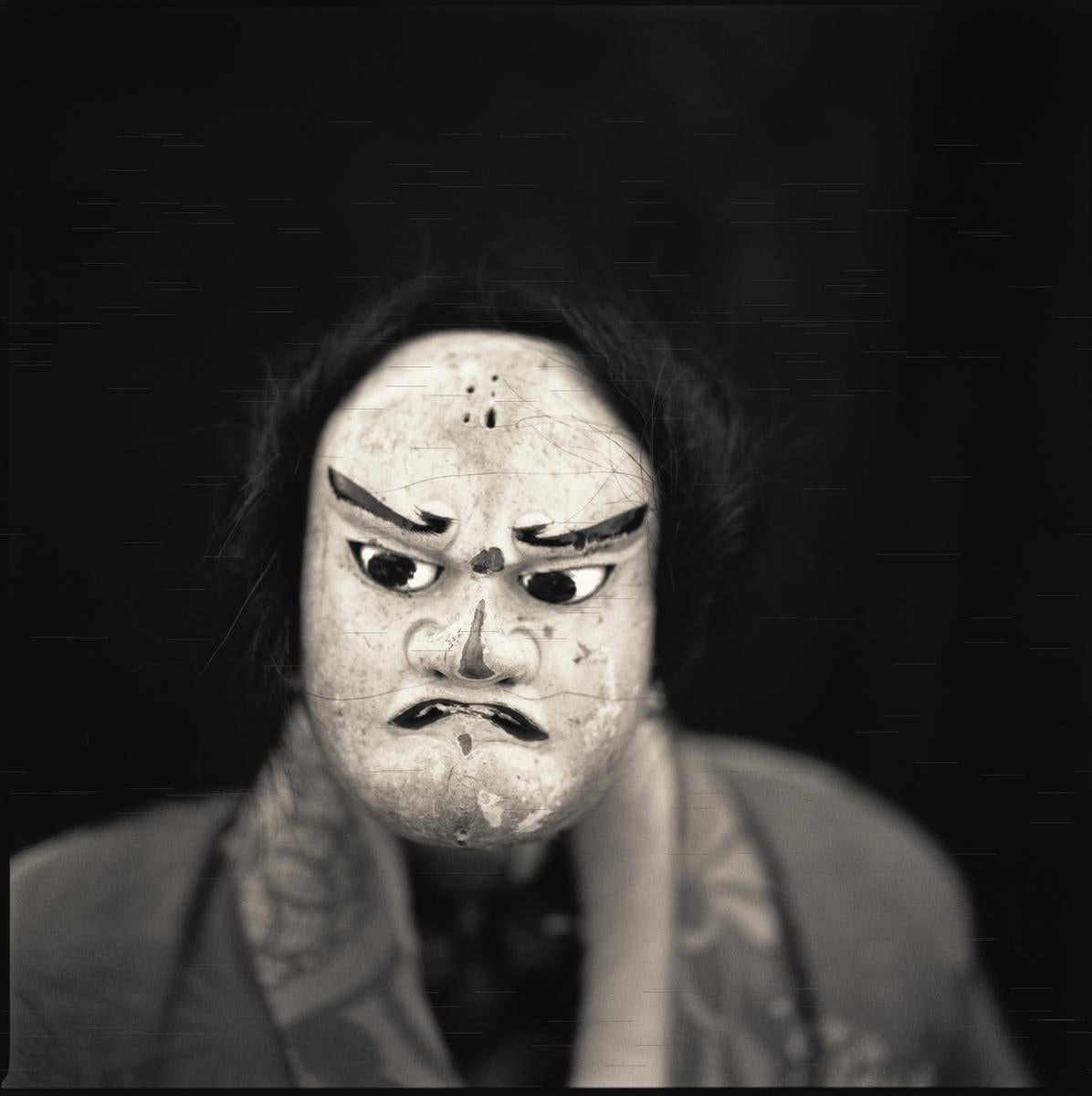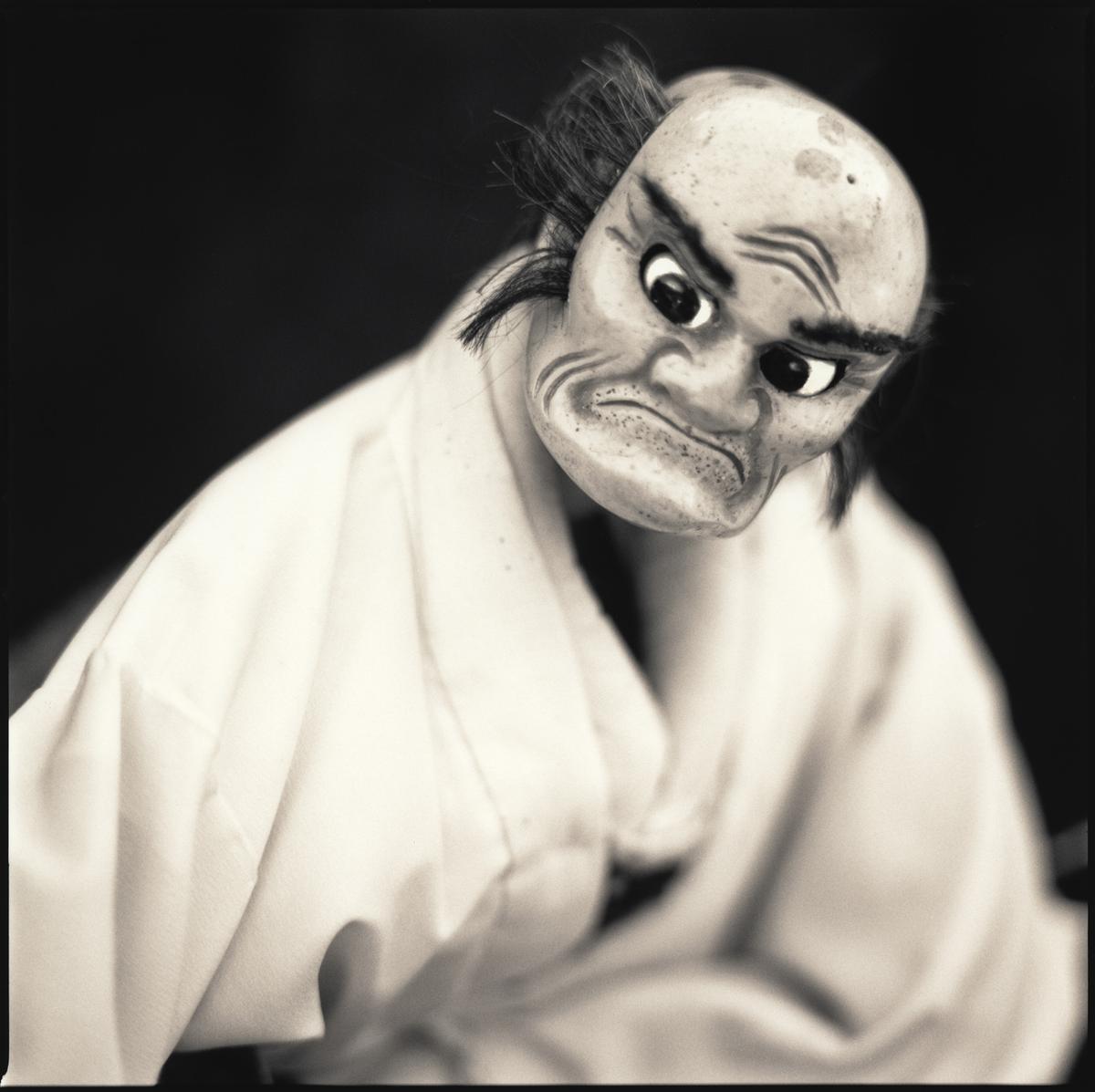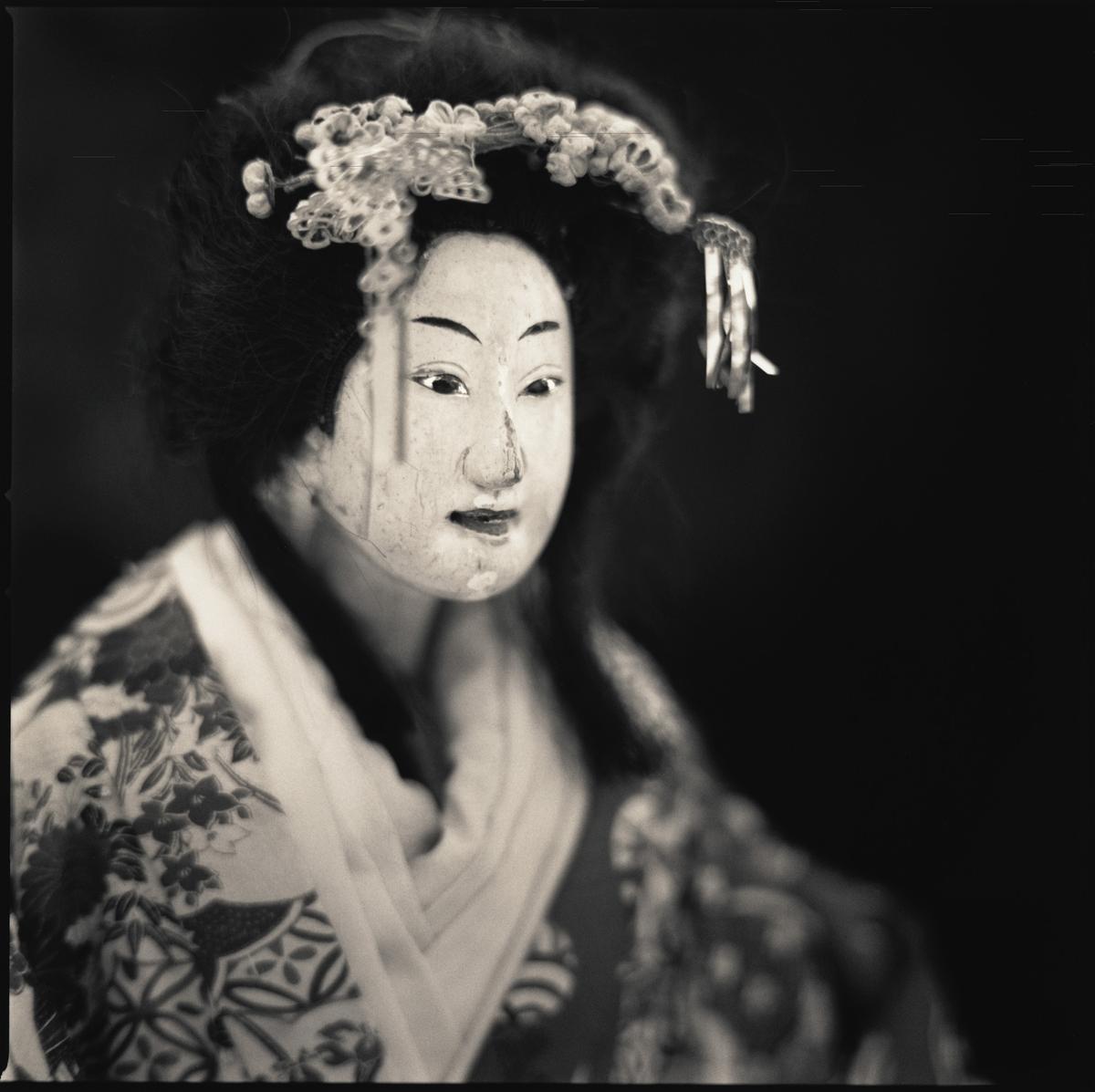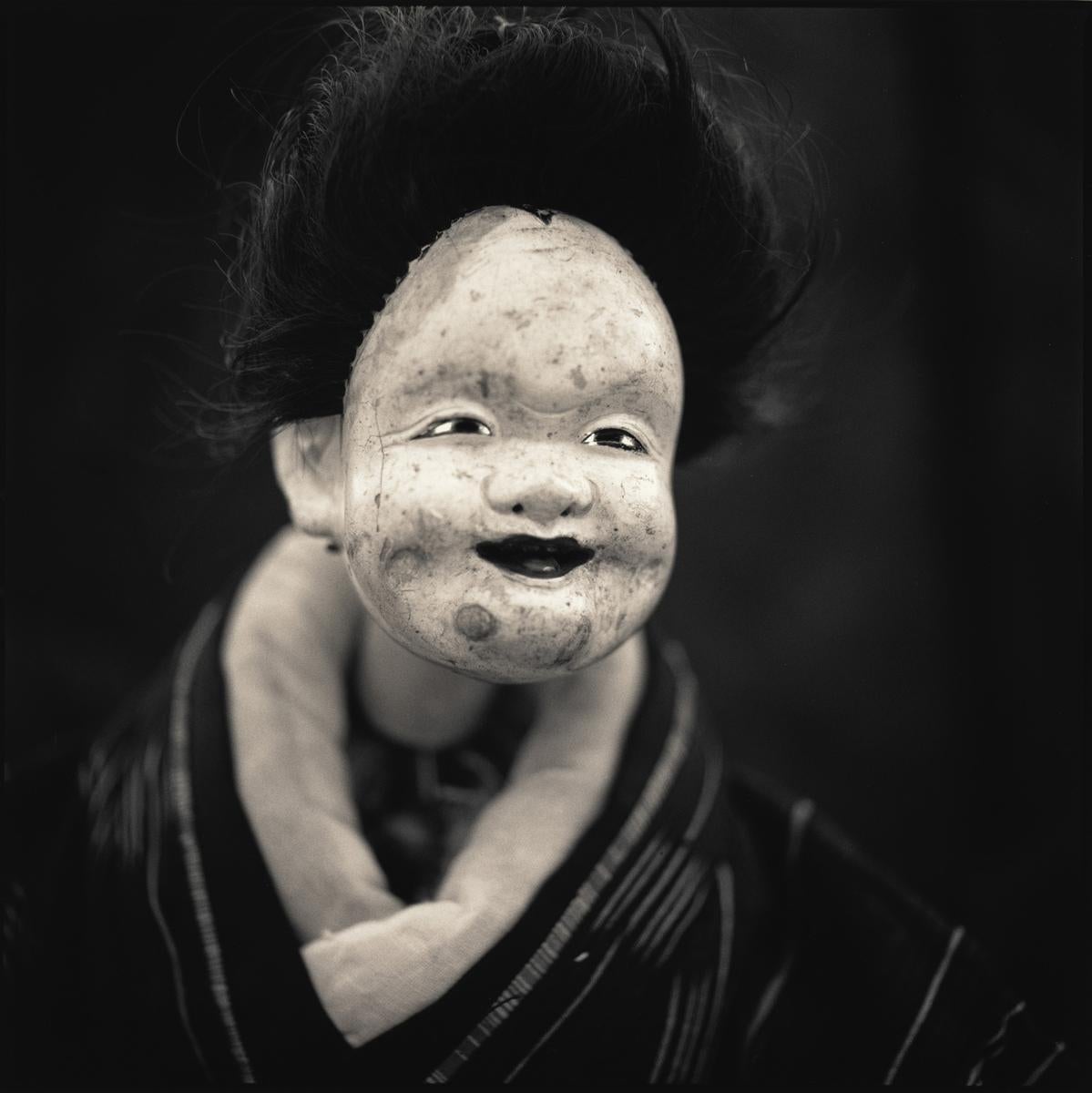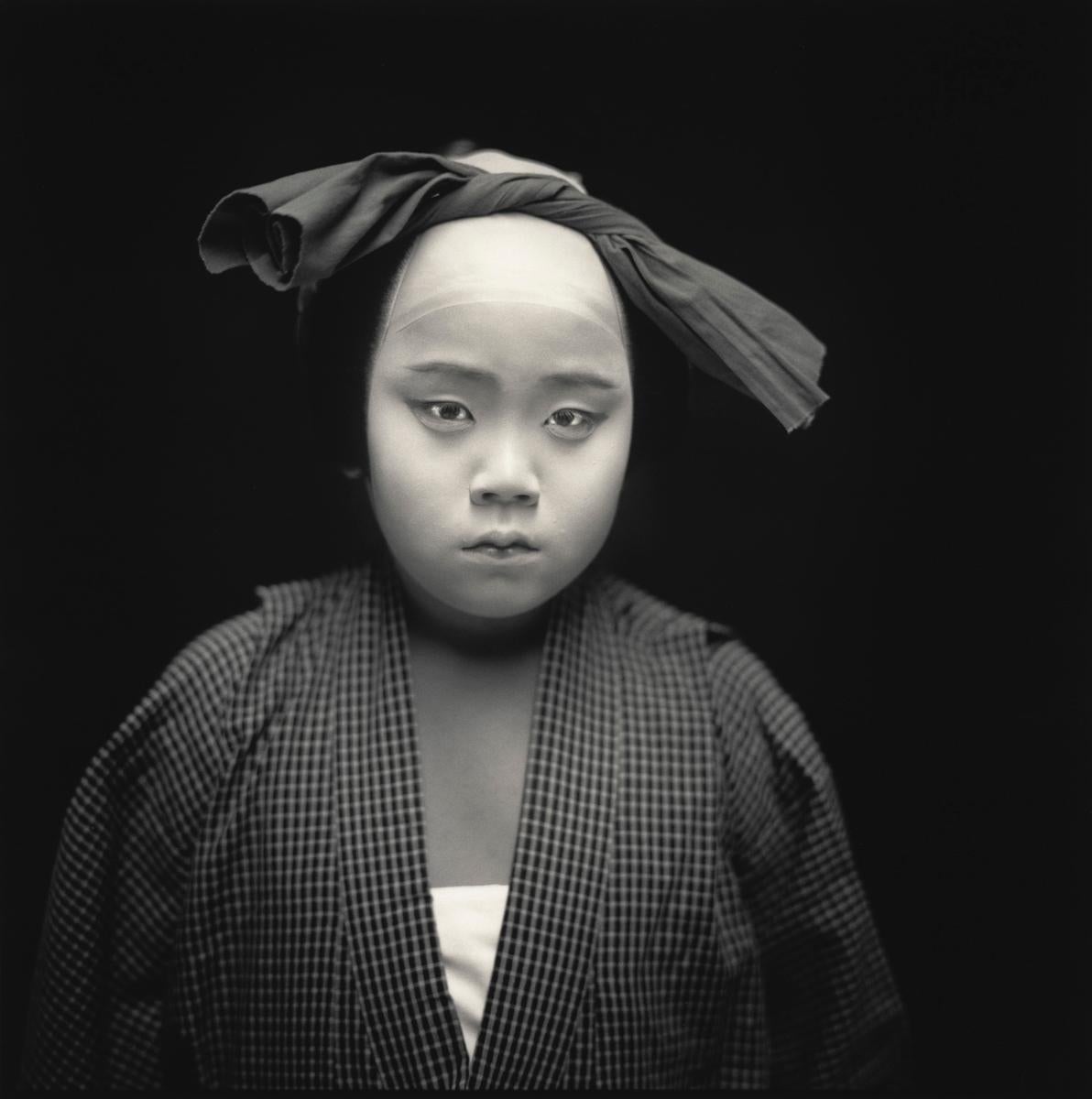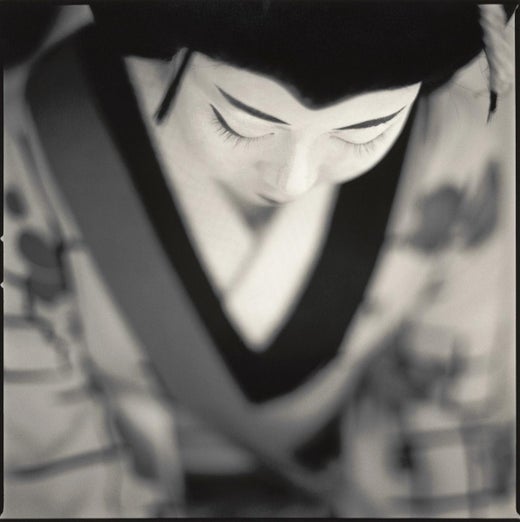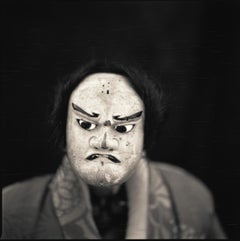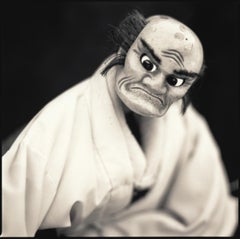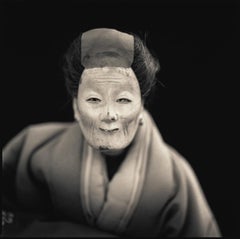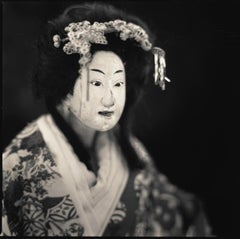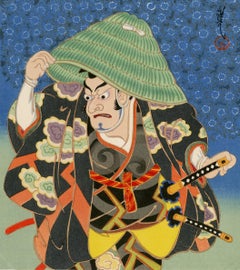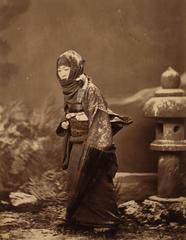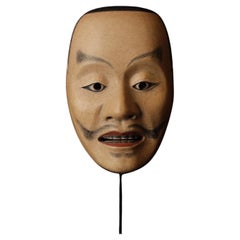Want more images or videos?
Request additional images or videos from the seller
1 of 5
Hiroshi WatanabeOniichi, Ena Bunraku2003
2003
$1,250
£943.34
€1,079.98
CA$1,762.91
A$1,935.46
CHF 1,009.73
MX$23,421.76
NOK 12,655.44
SEK 11,924.76
DKK 8,061.78
About the Item
Those Kabuki players you see in my photographs are not with the mainstream Kabuki companies in Tokyo. They are with localized small groups located in various parts of Japan. They are not professional actors in a sense, as they don’t get paid for their plays. They actually spend quite a lot of their own money to be in the plays. Kabuki is known for lavish make-up, costumes, and stage set-ups. As such, those who want to be in the plays must be committed and prepared. They spend their time and money because of their love for being in the theater—attention they get, pride, prestige, and joy of being part of their tradition. One such company is based in a town called Nakatsugawa. The town is cozily nested at the foot of Japan Alps Mountains. It was situated at the halfway point between Tokyo and Kyoto of the old main road called Nakasendo in Edo era, and because of this strategic location, it flourished as a trading post about three hundred years ago. The town became rich, but had no cultures as they are away from big cities. They had to wait for Kabuki Company to arrive, which comes only once a year. Being tired of waiting, they finally decided to do Kabuki by themselves. They built a theater and hired make-up artists, costumers, and stage craftsmen from Kyoto just for themselves, and they started to play their favorite stories. Thus it became their tradition. I believe good portraits are the ones that show the characters and personality of the subjects--their human beings. I find it a difficult task, as people are so well educated about photographs nowadays. People know how to pose, how to make impressions, and how to look good, and hardly reveal what they really are. Those Kabuki players are also hidden in heavy make-up and wardrobes in a made-up world. But when they sit in front of my camera between plays, they are so much saturated (and worried) in their roles, that they pay very little attention to my existence. They are struck with stage fright and they repeat their lines over and over as I photograph. Remember this is not what they do everyday. On the other hand, they are not afraid of me, or of anyone else, as their faces are shielded by the heavy make-ups. They can be themselves without worrying about other people, as if they were in the masquerade. They feel that no one knows who he or she really is, or at least people know that they were in a fictional world. At those moments, they are much closer to me.
- Creator:Hiroshi Watanabe (1951, Japanese)
- Creation Year:2003
- Dimensions:Height: 10 in (25.4 cm)Width: 10 in (25.4 cm)
- Medium:
- Movement & Style:
- Period:
- Framing:Framing Options Available
- Condition:
- Gallery Location:Sante Fe, NM
- Reference Number:1stDibs: LU134210524722
Hiroshi Watanabe
" I go to places that captivate and intrigue me. I am interested in what humans do. I seek to capture people, traditions, and locales that first and foremost are of personal interest. I immerse myself with information on the places prior to leaving, but I try to avoid firm, preconceived ideas. I strive for both calculation and discovery in my work, keeping my mind open for surprises. At times, I envision images I’d like to capture, but when I actually look through the viewfinder, my mind goes blank and I photograph whatever catches my eye. Photographs I return with are usually different from my original concepts. My photographs reflect both genuine interest in my subject as well as a respect for the element of serendipity, while other times I seek pure beauty. The pure enjoyment of this process drives and inspires me. I believe there’s a thread that connects all of my work -- my personal vision of the world as a whole. I make every effort to be a faithful visual recorder of the world around me, a world in flux that, at very least in my mind, deserves preservation." – Hiroshi Watanabe
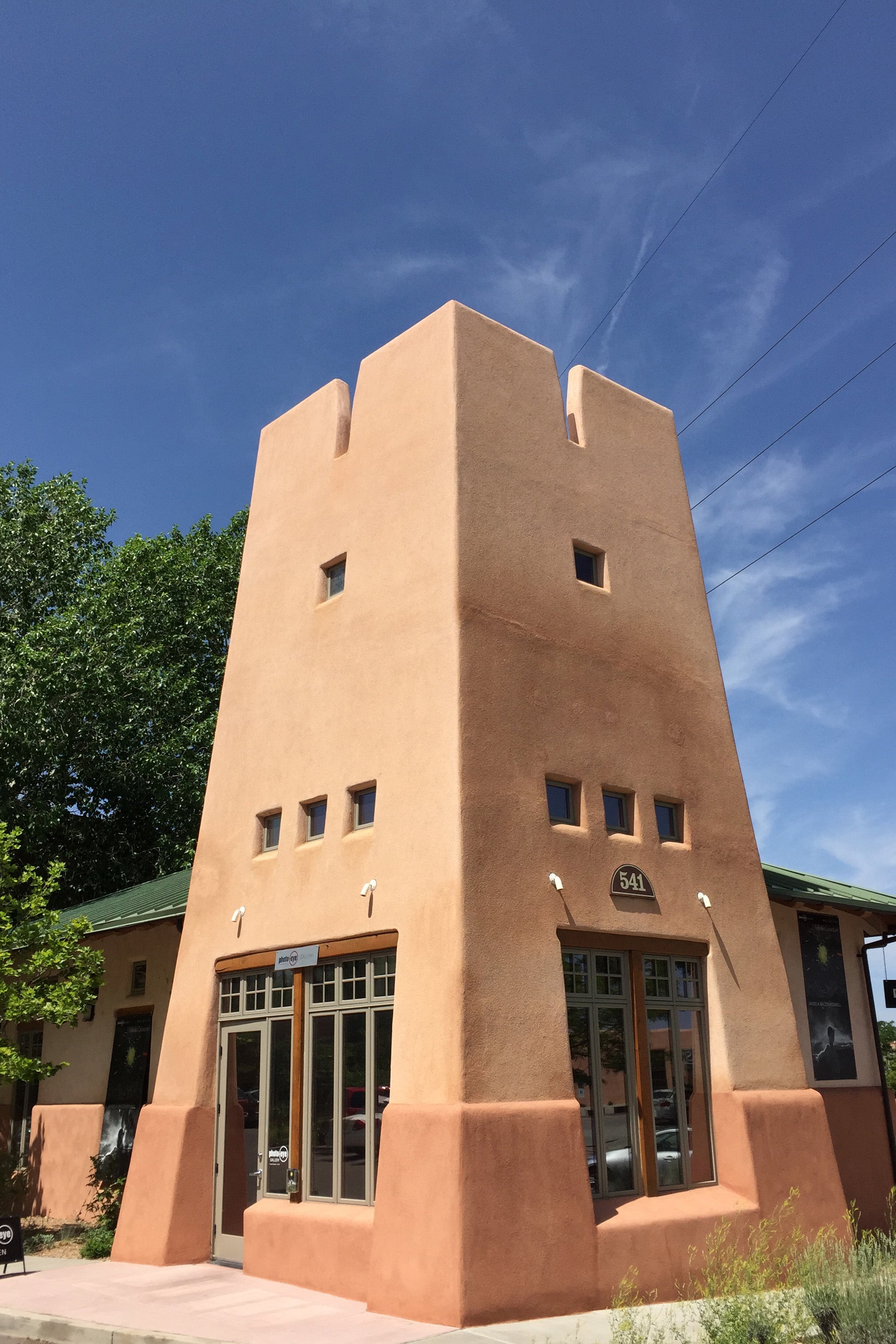
About the Seller
5.0
Vetted Professional Seller
Every seller passes strict standards for authenticity and reliability
Established in 1993
1stDibs seller since 2015
235 sales on 1stDibs
Typical response time: 7 hours
- ShippingRetrieving quote...Shipping from: Santa Fe, NM
- Return Policy
Authenticity Guarantee
In the unlikely event there’s an issue with an item’s authenticity, contact us within 1 year for a full refund. DetailsMoney-Back Guarantee
If your item is not as described, is damaged in transit, or does not arrive, contact us within 7 days for a full refund. Details24-Hour Cancellation
You have a 24-hour grace period in which to reconsider your purchase, with no questions asked.Vetted Professional Sellers
Our world-class sellers must adhere to strict standards for service and quality, maintaining the integrity of our listings.Price-Match Guarantee
If you find that a seller listed the same item for a lower price elsewhere, we’ll match it.Trusted Global Delivery
Our best-in-class carrier network provides specialized shipping options worldwide, including custom delivery.More From This Seller
View AllBunshichi, Ena Bunraku
By Hiroshi Watanabe
Located in Sante Fe, NM
Those Kabuki players you see in my photographs are not with the mainstream Kabuki companies in Tokyo. They are with localized small groups located in various parts of Japan. They are...
Category
Early 2000s Contemporary Black and White Photography
Materials
Silver Gelatin
Oshuto, Ena Bunraku
By Hiroshi Watanabe
Located in Sante Fe, NM
Those Kabuki players you see in my photographs are not with the mainstream Kabuki companies in Tokyo. They are with localized small groups located in various parts of Japan. They are...
Category
Early 2000s Contemporary Black and White Photography
Materials
Silver Gelatin
Jidaibaba, Ena Bunraku
By Hiroshi Watanabe
Located in Sante Fe, NM
Those Kabuki players you see in my photographs are not with the mainstream Kabuki companies in Tokyo. They are with localized small groups located in various parts of Japan. They are...
Category
Early 2000s Contemporary Portrait Photography
Materials
Silver Gelatin
Musume, Ena Bunraku
By Hiroshi Watanabe
Located in Sante Fe, NM
Those Kabuki players you see in my photographs are not with the mainstream Kabuki companies in Tokyo. They are with localized small groups located in various parts of Japan. They are...
Category
Early 2000s Contemporary Black and White Photography
Materials
Silver Gelatin
Ofuku, Ena Bunraku
By Hiroshi Watanabe
Located in Sante Fe, NM
Those Kabuki players you see in my photographs are not with the mainstream Kabuki companies in Tokyo. They are with localized small groups located in various parts of Japan. They are...
Category
Early 2000s Contemporary Black and White Photography
Materials
Silver Gelatin
Hirokazu Nishijima, Matsuo Kabuki
By Hiroshi Watanabe
Located in Sante Fe, NM
Those Kabuki players you see in my photographs are not with the mainstream Kabuki companies in Tokyo. They are with localized small groups located in various parts of Japan. They are...
Category
Early 2000s Contemporary Portrait Photography
Materials
Silver Gelatin
You May Also Like
Fuwa, Kabuki Actor
By Masamitsu Ota
Located in Fairlawn, OH
Fuwa, Kabuki actor
Color woodblock, 1931
From: “Kabuki Jahachi-Ban” (Eighteen Kabuki Plays) by the Ichikawa Family
Publisher: Gekiga Kanko Kai
Carver: Okura Hanbei
Printer: Shinmi Yo...
Category
1930s Other Art Style Figurative Prints
Materials
Woodcut
Japanese Woman
Located in Santa Monica, CA
Vintage Albumen print
Category
Late 19th Century Portrait Photography
Japanese Late Edo Period Life-Size Imperial Bunraku by Nagoshi Kenji, ca. 1850
Located in New York, NY
Japanese Late Edo Period Life-Size Imperial Bunraku
Head, Hands and Legs by Nagoshi Kenji, Ca. 1850
DIMENSIONS
Head: 13” High
Hands: 11” High
Legs: 9” High
...
Category
Antique 1850s Japanese Japonisme Figurative Sculptures
Materials
Wood
Japanese Heita (平太) Noh mask. Attributed to Takada Fuki (高田 冨季)
Located in Fukuoka, JP
Heita (平太) Noh Mask attributed to Takada Fuki (高田 冨季, 1935–2008)
Mask: Heita (平太)
SKU: TBA18
Size: W: 16 cm, H: 21 cm
The Heita mask is used to portray warriors, military commander...
Category
20th Century Japanese Showa Sculptures and Carvings
Materials
Wood
Japanese Meiji Period Elaborate Bunraku Puppeta, 19th Century
Located in New York, NY
Japanese Meiji Period Elaborate Bunraku Puppeta. 19th Century
Meiji Period (1868-1912)
Minor wear to textiles, fine antique condition,
Original Bamboo display stand.
DIMENSION
Height: 33 inches
Width: 18 inches
Depth: 9 inches
ABOUT
Bunraku (puppet) depicting the warrior Minamoto Yoshistune his head carved of wood and covered in a fine white gofun with painted details, face of a handsome youth with trigger mechanism allowing for the eyebrows to raise and lower and the eyes to shift from side, is wearing military armor with signature dragon on his breastplate ,brocade patterning of his thick obi tie, sumptuous silk brocade kimono and brocade hakama trousers with the Minamoto Clan pattern, silk tabi socks...
Category
Antique Mid-19th Century Japanese Japonisme Figurative Sculptures
Materials
Wood
Japanese Noh Mask of Zō-onna (増女) - noble young woman
Located in Fukuoka, JP
Zō-onna (増女)
This mask depicts a woman with a noble and calm expression. In Noh theater, it is used for roles of young women. The mask conveys elegance and softness, making it suita...
Category
20th Century Japanese Showa Sculptures and Carvings
Materials
Wood
